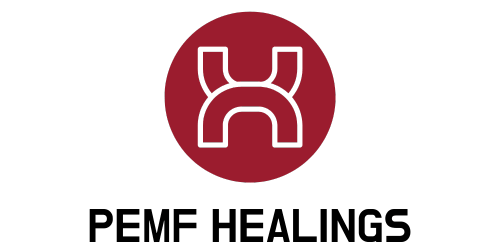Imagine a world where pain relief is as easy as lying down and relaxing. It may sound too good to be true, but that’s exactly what PEMF therapy promises to deliver. But does it really work? This article will explore the effectiveness of PEMF therapy and shed light on whether this innovative treatment is worth considering for your own health and well-being. Whether you’re dealing with chronic pain or simply curious about alternative therapies, read on to discover if PEMF therapy could be the answer you’ve been searching for.

What is PEMF Therapy?
Definition and explanation of PEMF therapy
PEMF therapy, also known as Pulsed Electromagnetic Field therapy, is a non-invasive treatment that uses electromagnetic fields to improve health and well-being. It involves the use of specific frequencies and intensities of electromagnetic fields to stimulate cells and tissues in the body, promoting various physiological processes and providing therapeutic benefits.
How it works
PEMF therapy works by delivering electromagnetic pulses to the body, which can penetrate deep into tissues and cells. These pulses create a wave-like motion that activates electrical and chemical processes within the cells. This stimulation enhances cellular energy production, improves blood circulation, and stimulates natural healing mechanisms in the body.
History of PEMF therapy
The history of PEMF therapy dates back to the early 20th century when scientists and medical professionals started exploring the effects of electromagnetic fields on the human body. Initially used for the healing of bone fractures, PEMF therapy gradually gained recognition for its broader applications in pain management, tissue repair, and overall wellness. Over the years, advancements in technology have allowed for more precise and targeted PEMF treatments.
Applications of PEMF therapy
PEMF therapy has a wide range of applications across various medical and wellness fields. It is commonly used for pain management, particularly in chronic conditions such as arthritis, fibromyalgia, and back pain. Additionally, PEMF therapy has shown promise in promoting wound healing, reducing inflammation, improving mental health conditions, enhancing sports performance, and managing neurological disorders.
Mechanism of Action
How PEMF therapy affects the body
PEMF therapy affects the body by stimulating cell activities and optimizing cellular energy. When the electromagnetic pulses penetrate tissues and cells, they stimulate a cascade of biochemical reactions, influencing cellular processes such as protein synthesis, DNA replication, and enzyme activation. These cellular responses contribute to overall tissue repair, improved function, and enhanced well-being.
Stimulation of cell activities
The electromagnetic pulses delivered during PEMF therapy induce electrical changes within cells, triggering the release of specific proteins and chemicals that are crucial for cell communication and functioning. This stimulation enhances cellular metabolism, promoting the transport of nutrients into the cells and waste removal from the cells. It also activates immune cells, improving the body’s defense mechanisms against pathogens and promoting a healthier cellular environment.
Enhancement of cellular energy
One of the key mechanisms of action of PEMF therapy is its ability to increase cellular energy production. The electromagnetic pulses stimulate the mitochondria, the energy powerhouses of the cells, to produce a higher amount of adenosine triphosphate (ATP). ATP is the primary source of energy for cellular processes, and increased ATP production results in enhanced cellular function, improved tissue repair, and faster healing.
Improvement of blood circulation
PEMF therapy has been shown to improve blood circulation by increasing the vasodilation of blood vessels. The electromagnetic pulses stimulate the production of nitric oxide, a molecule that relaxes and widens blood vessels, allowing for improved blood flow. This increased circulation delivers essential nutrients, oxygen, and immune cells to the target tissues, promoting healing and reducing inflammation.
Influence on pain perception
PEMF therapy has a significant impact on pain perception. By stimulating the release of endorphins, which are the body’s natural painkillers, PEMF therapy helps alleviate pain symptoms. The electromagnetic pulses also modulate neurochemical signals in the central nervous system, reducing pain transmission and promoting a sense of well-being.
Induction of tissue healing and repair
The application of PEMF therapy has shown potent effects in tissue healing and repair processes. The electromagnetic pulses stimulate the production of growth factors and proteins that are essential for tissue regeneration. This accelerated healing response is particularly beneficial for musculoskeletal injuries, bone fractures, and chronic wounds.
Scientific Research and Studies
Overview of scientific studies on PEMF therapy
Numerous scientific studies have been conducted to investigate the therapeutic efficacy of PEMF therapy. These studies encompass a wide range of medical conditions and applications, evaluating the effects of PEMF therapy on cellular processes, pain management, tissue repair, and overall well-being.
Evidence supporting the effectiveness of PEMF therapy
The evidence supporting the effectiveness of PEMF therapy is promising. Studies have demonstrated positive outcomes in pain reduction, accelerated fracture healing, decreased inflammation, improved sleep quality, and enhanced overall quality of life. Several clinical trials have reported significant improvements in pain scores, mobility, and functional outcomes in patients with musculoskeletal disorders.
Clinical trials and their findings
Clinical trials have played a crucial role in validating the therapeutic benefits of PEMF therapy. Some trials have focused on specific conditions such as osteoarthritis, chronic pain, and depression, while others have explored the general efficacy of PEMF therapy across various conditions. These trials have consistently shown improvements in pain intensity, physical function, and quality of life measures.
Criticism and limitations of existing research
While the existing research on PEMF therapy is promising, it is important to acknowledge its limitations and criticisms. Some studies have lacked robust methodologies and small sample sizes, limiting the generalizability of the findings. Additionally, the optimal parameters for PEMF therapy, including frequency, intensity, and duration, are still being explored, making it challenging to establish standardized treatment protocols.
Conditions Treated with PEMF Therapy
Pain management
PEMF therapy has shown substantial efficacy in pain management. It can be used for various pain conditions, including back pain, arthritis, neuropathic pain, and fibromyalgia. By reducing pain intensity and improving overall well-being, PEMF therapy provides a non-pharmacological option for individuals seeking natural pain relief.
Orthopedic conditions
Orthopedic conditions such as fractures, osteoarthritis, and musculoskeletal injuries can benefit from PEMF therapy. The electromagnetic pulses promote bone healing, enhance cartilage regeneration, and reduce inflammation, leading to improved mobility and function.
Sports injuries
PEMF therapy has gained popularity among athletes for its potential to accelerate the healing process and improve sports performance. It can be used for a wide range of sports injuries, including sprains, strains, tendonitis, and stress fractures. Not only does it facilitate faster recovery, but it also reduces inflammation and pain, allowing athletes to return to their activities sooner.
Neurological disorders
PEMF therapy has shown promising results in managing various neurological disorders such as multiple sclerosis, Parkinson’s disease, and stroke rehabilitation. The electromagnetic pulses can stimulate neural pathways, promote neuroplasticity, and reduce neuroinflammation, leading to improved motor control, cognitive function, and overall quality of life.
Wound healing
PEMF therapy has demonstrated significant potential in promoting wound healing, particularly in chronic and non-healing wounds. By enhancing cellular metabolism, stimulating angiogenesis, and modulating inflammatory processes, PEMF therapy improves the healing rate and reduces the risk of wound complications.
Depression and anxiety
Research suggests that PEMF therapy may have beneficial effects on mental health conditions such as depression and anxiety. The electromagnetic pulses can modulate neurotransmitter levels, regulate neuroendocrine function, and improve brain connectivity, thereby alleviating symptoms and enhancing emotional well-being.

Personal Experiences and Testimonials
Real-life stories of individuals who have used PEMF therapy
Countless individuals have shared their personal experiences and testimonials regarding their use of PEMF therapy. These stories highlight the diverse range of conditions for which PEMF therapy has shown effectiveness. From chronic pain sufferers to athletes and individuals with neurological disorders, many have reported significant improvements in symptoms and overall quality of life.
Improved quality of life
People who have undergone PEMF therapy often report an improved quality of life. They experience reduced pain, increased mobility, enhanced sleep, and overall well-being. These improvements contribute to a greater sense of happiness and satisfaction in daily life.
Relief from pain and symptoms
One of the most common benefits reported by individuals using PEMF therapy is pain relief. Whether it’s chronic pain or acute injuries, PEMF therapy has provided relief from pain symptoms, allowing individuals to resume their daily activities without the reliance on pain medications.
Benefits for athletes
PEMF therapy has garnered attention in the sports community for its potential benefits in enhancing athletic performance and reducing recovery time. Athletes have reported improvements in muscle recovery, reduced inflammation, and increased stamina and endurance after incorporating PEMF therapy into their training regimen.
Anecdotal evidence
While anecdotal evidence should be interpreted with caution, it provides valuable insights into the potential benefits of PEMF therapy. Many individuals have shared their positive experiences with PEMF therapy, noting improvements in various aspects of their health and well-being.
Safety and Side Effects
Potential risks and precautions
PEMF therapy is generally considered safe, with minimal risks and side effects. However, certain precautions should be taken, particularly for individuals with specific medical conditions. Pregnant women, individuals with implanted medical devices, epilepsy patients, and those with active cancer should consult with their healthcare provider before using PEMF therapy.
Contradictions and contraindications
There are a few contradictions and contraindications for PEMF therapy. It should not be used on individuals with pacemakers, cochlear implants, or other electronic implants. Additionally, individuals with a history of seizures or epilepsy should exercise caution when considering PEMF therapy.
Adverse effects and complications
Adverse effects and complications associated with PEMF therapy are rare. Some individuals may experience minor discomfort or temporary worsening of symptoms during the initial stages of treatment, known as the “healing crisis.” However, these effects typically subside as the body adjusts to the therapy.
Safety guidelines for using PEMF devices
To ensure the safe use of PEMF devices, it is important to follow the manufacturer’s instructions and guidelines. This includes selecting appropriate treatment settings, using the devices in accordance with recommended durations and frequencies, and avoiding prolonged exposure to magnetic fields.
Professional Recommendations
Views of medical professionals on PEMF therapy
Opinions among medical professionals regarding PEMF therapy vary. While some healthcare practitioners fully endorse its effectiveness and include it as part of their treatment protocols, others remain skeptical due to the limited conclusive evidence. However, an increasing number of medical professionals recognize the potential benefits of PEMF therapy and support its integration into conventional medicine.
Integration of PEMF therapy into conventional medicine
PEMF therapy is gradually being integrated into conventional medicine as a complementary treatment option. Many healthcare facilities, including clinics and hospitals, have started incorporating PEMF therapy into their services, particularly for pain management and orthopedic rehabilitation. This integration allows for a holistic approach to healthcare, combining conventional treatments with innovative therapies like PEMF.
Usage in clinics and hospitals
Clinics and hospitals are increasingly incorporating PEMF therapy into their treatment offerings. This is particularly evident in pain clinics, sports medicine departments, and integrative medicine centers. Medical professionals, including doctors, physiotherapists, and chiropractors, are trained to administer PEMF therapy safely and effectively.
Physician experiences and opinions
Physicians who have utilized PEMF therapy in their practice have observed positive outcomes in their patients. Many report improvements in pain relief, enhanced healing rates, and reduction in the need for pain medications. While more research is still needed, the firsthand experiences of these physicians contribute to the growing body of evidence supporting the use of PEMF therapy.
Comparisons with Other Therapies
Comparison with other alternative therapies
When compared to other alternative therapies, PEMF therapy stands out due to its non-invasive nature and ability to target deep tissues. Unlike treatments such as acupuncture or herbal remedies, PEMF therapy does not rely on external substances or invasive procedures to provide therapeutic benefits. The electromagnetic fields generated by PEMF devices have the ability to penetrate tissues, making it suitable for addressing a wide range of medical conditions.
Comparison with traditional medical treatments
PEMF therapy can also be compared to traditional medical treatments, such as medication or surgery. While traditional treatments may target specific symptoms or provide temporary relief, PEMF therapy focuses on enhancing the body’s own healing mechanisms and promoting overall well-being. It can be used in conjunction with conventional treatments to enhance their efficacy and reduce the reliance on medication.
Advantages and disadvantages of PEMF therapy
The advantages of PEMF therapy include its non-invasiveness, minimal side effects, and potential for a wide range of applications. It is a safe and well-tolerated treatment option that can complement conventional treatments. However, the disadvantages of PEMF therapy include the need for continued treatment sessions, the cost of devices, and the lack of standardized treatment guidelines. Additionally, further research is needed to establish its long-term efficacy and cost-effectiveness.
Regulatory Status
Regulations and approvals for PEMF therapy
The regulatory status of PEMF therapy varies depending on the country and region. In some jurisdictions, PEMF devices may be classified as medical devices and subject to regulations and approvals by health authorities. In other cases, they may be regulated as wellness devices or supplements, falling under different regulatory frameworks.
FDA approval status
In the United States, several PEMF devices have received FDA approval for specific medical conditions such as pain relief or post-operative edema. These approvals provide assurance regarding the safety and effectiveness of the specific devices and their designated uses.
Supplement vs. medical device classification
The classification of PEMF devices as supplements or medical devices can impact their marketing and regulatory requirements. Supplements are generally subject to less rigorous regulations, which may affect the level of scientific evidence required to substantiate their claims. Medical devices, on the other hand, undergo more stringent regulatory processes to ensure their safety and efficacy.
Legal considerations
Individuals interested in using PEMF therapy should be aware of the legal considerations surrounding its use. It is important to research and comply with the regulations regarding the purchase, use, and marketing of PEMF devices in their respective countries or regions.
Conclusion
Summarize key findings and arguments
PEMF therapy is a non-invasive treatment that utilizes electromagnetic fields to promote health and well-being. Its mechanism of action involves stimulating cells, enhancing cellular energy, improving blood circulation, influencing pain perception, and inducing tissue healing and repair. Scientific studies have provided evidence supporting its effectiveness, with clinical trials demonstrating positive outcomes in various medical conditions. Personal experiences and testimonials further validate the therapeutic benefits of PEMF therapy, including pain relief, improved quality of life, and faster healing. While precautions and safety guidelines should be followed, PEMF therapy is increasingly being recognized by medical professionals and integrated into conventional medicine. Comparisons with other therapies highlight its unique advantages, and legal considerations underscore the importance of compliance with regulations. Overall, PEMF therapy shows promise in improving health outcomes and may pave the way for future research and advancements in this field.


